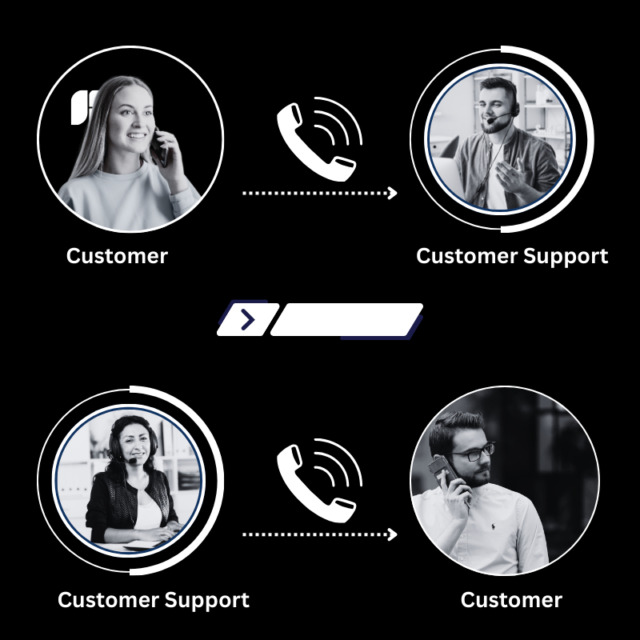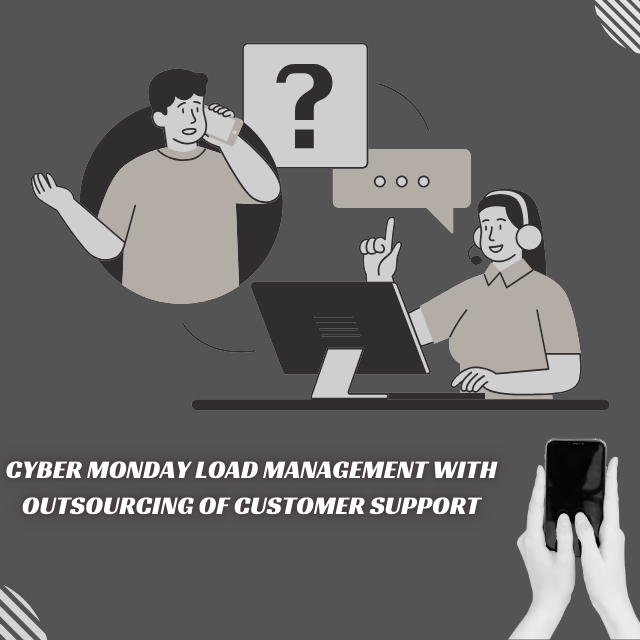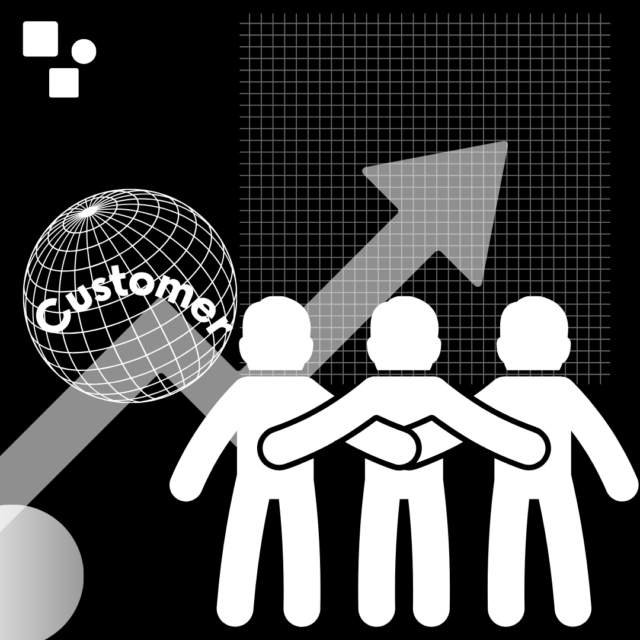In the era of rapid digitalization, inbound and outbound customer support is still considered one of the most important ways of resolving customer queries. Call centers offer the closest experience to face-to-face customer interaction. Both inbound and outbound call centers handle large volumes of calls while delivering a seamless customer experience by resolving their queries faster than ever. If you are confused about which customer support to choose, understanding the difference will help you make the right decision about whether to choose inbound or outbound customer support for your business.
What is Inbound Customer Support?
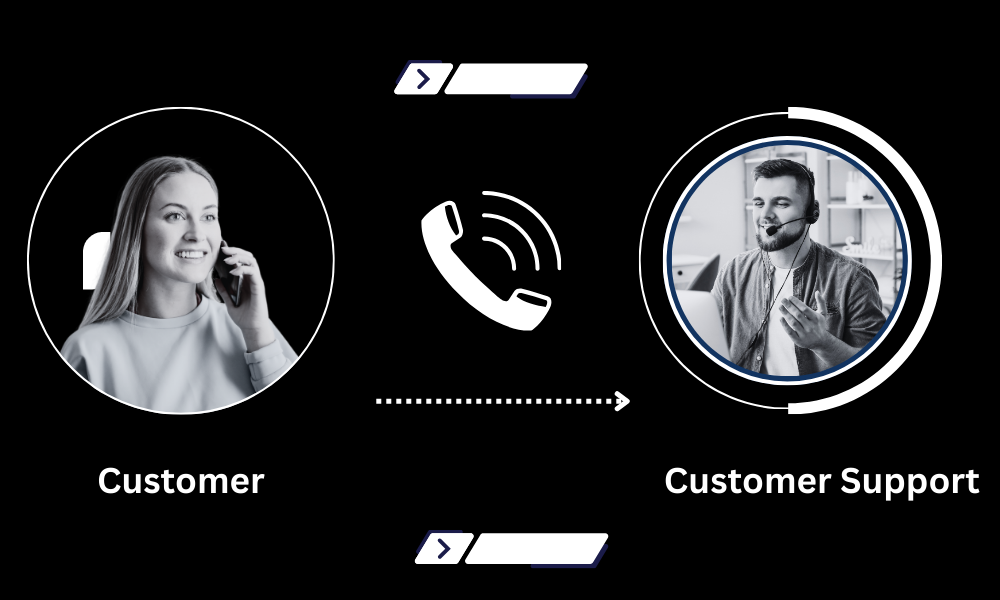
As the name suggests, inbound customer support is defined as the call center that is responsible for handling inbound calls from customers. Inbound calls are the incoming voice calls of existing customers or prospective customers for your business, which are attended by customer care representatives. Inbound customer support will operate 24*7 and 365 days a year, to solve your customers’ queries and offer them a seamless shopping experience.
What is Outbound Customer Support?
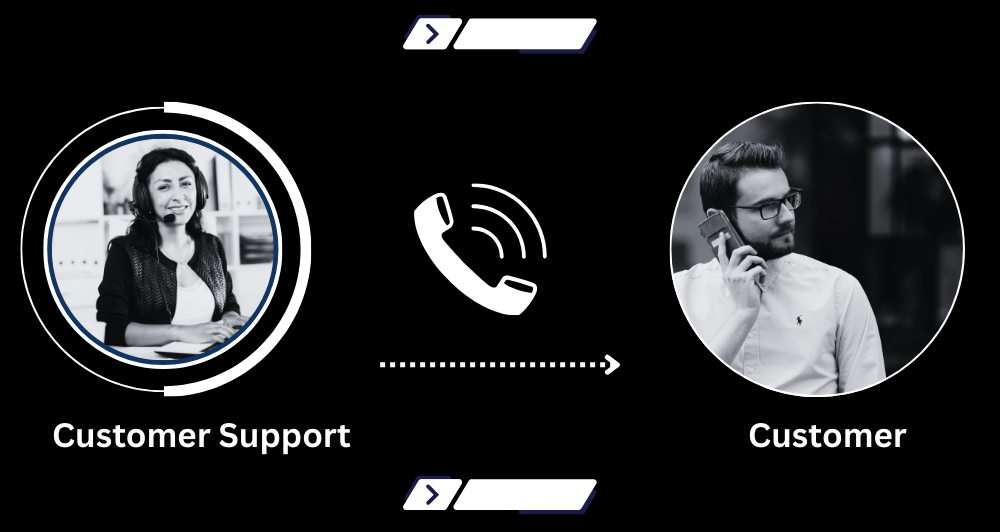
While inbound customer support handles all incoming calls for your brand, on the other hand, outbound customer support does just the opposite. Outbound customer support makes calls on behalf of your brand to your customers. It includes sales calls, customer feedback calls, subscription renewal, cross-sell, upsell, introductory calls for a new product or service launch, and letting your customers know about offers and discounts. Outbound call centers work during normal business hours as per the suitability of customers’ ease.
Difference Between Inbound and Outbound Customer Support
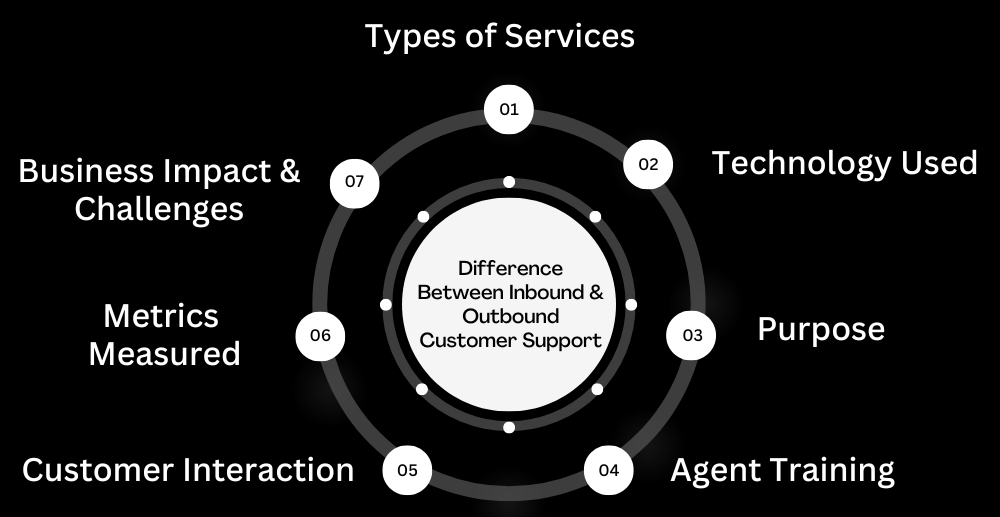
To decide which customer support option works best for your business, it is very important to understand both the concepts and their differences very clearly. Let’s take a look at the difference between inbound and outbound customer support based on their services, technology, and use cases.
For expert customer support outsourcing services
Types of Services
Both the customer support teams offer different services; however, both are important for your business. Your inbound customer support team mostly focuses on customer complaints, issues, and queries while providing them with 24*7 assistance with relevant solutions within a stipulated time. The main aspect is to provide effective customer service and help in enhancing customer loyalty and retaining them towards your brand.
Another service of inbound call centers is focusing on inbound sales. When a customer calls about any products, customer care agents pitch for better products that not only serve the purpose of that customer but also help in more sales.
Outbound customer support caters to customer success by proactively reaching out to customers and helping them achieve their goals with the product portfolio. Outbound calls are also meant for collecting customer feedback, cross-selling, upselling, and pitching personalized offers and discounts.
Technology Used
There are differences in technologies and software used in both the customer support aspects. Inbound customer support uses technologies such as call control, call monitoring, including hold, mute, transfer, ticket migration, barge in, automatic call distribution, IVR, etc.
On the other hand, outbound customer support uses an automatic dialer for automatically dialing a customer, that eliminates the hassle of manually dialing a number and enables the agents to deliver the right solutions while enhancing productivity. While there is a predictive dialer that is used for calling unanswered calls within a shorter interval of time by minimizing idle time, time zone navigation, etc.
Purpose
While the purpose of both call centers is the same, i.e. enhancing customer satisfaction by resolving their issues faster than ever,. However, to accomplish this goal, both call centers use different technologies and methods. The purpose of inbound customer support is to solve customers’ queries and issues while enhancing customer satisfaction. On the contrary, the purpose of outbound customer support is to make customers delighted and engaged, boost customer loyalty, and cross-sell products and services.
Agent Training
Customer care agent training plays a crucial role in both outbound and inbound call centers. Inbound call center agents handle customer requests; hence, the interaction needs to be personalized. In the training sessions, the agents are encouraged to be polite, proactive, and patient so that they can listen accurately and ask relevant questions to understanding the problem. Conversely, outbound call center agents convert prospect customers into real-time customers. They are more sales-oriented and boost customer engagement.
Customer Interaction
Both call centers engage themselves in customer interactions; however, customer care representatives of inbound customer support generally receive calls from customers. Therefore, the customer interaction is being initiated by the customer. On the contrary, in outbound customer support, customer care agents initiate customer interactions by making a cold call for sales pitches, offers, new products, feedback, surveys, market research, etc.
Metrics Measured
The metrics used in both call centers of your business are very different from one another as they measure the efficacy and success rates of each customer support. The metrics used for measuring the efficiency of an inbound call center are first call resolution, average handle time, average speed of answer, abandoned call rate, average call transfer rate, and customer satisfaction score.
While the efficacy and success rate of outbound customer support are measured by the metrics named conversion rate, first call close, calls per agent, calls per account, hit rate, average call length, average hold time, occupancy rate, and call quality.
Business Impact and Challenges
Both call center services have equal impact in terms of business growth, increased sales and customer base. The effectiveness of outbound customer support is measured in terms of the total number of calls made by each customer care agent and how much they can make in sales. Whereas call center agents for inbound customer support are responsible for offering excellent customer service, thus creating a significant impact on business growth. Customer support plays a vital role in customer retention and improved revenue generation by tackling challenges in handling customers.
Want to know more about our customer support services?
CONCLUSION
The impact of both forms of customer support is equivalent and unique in their ways. Their importance cannot be underestimated; hence, one can go for inbound and outbound customer support based on the business requirements. Outsourcing customer support is the best option when your call volumes are higher and it leads to cost-efficiency.
Trupp Global is a renowned outsourcing agency specializing in offering tremendous customer support solutions to its clients that help them grow in the market. Trupp Global offers customized outsourcing solutions at an affordable rate, which will help you focus on core office functions.
